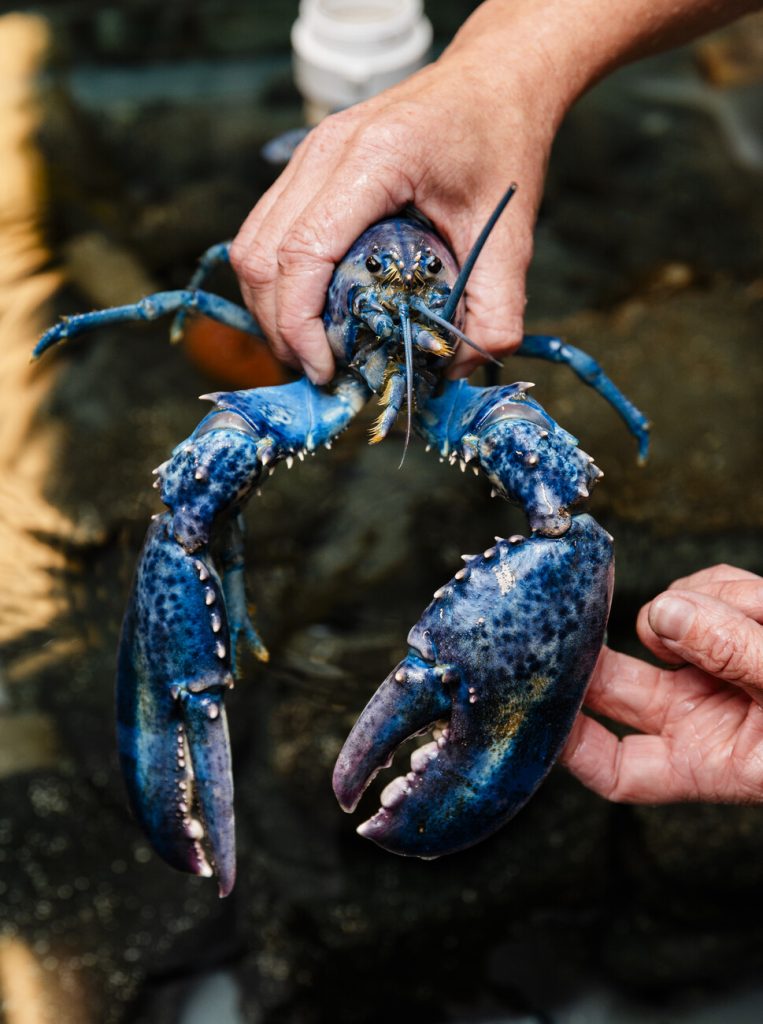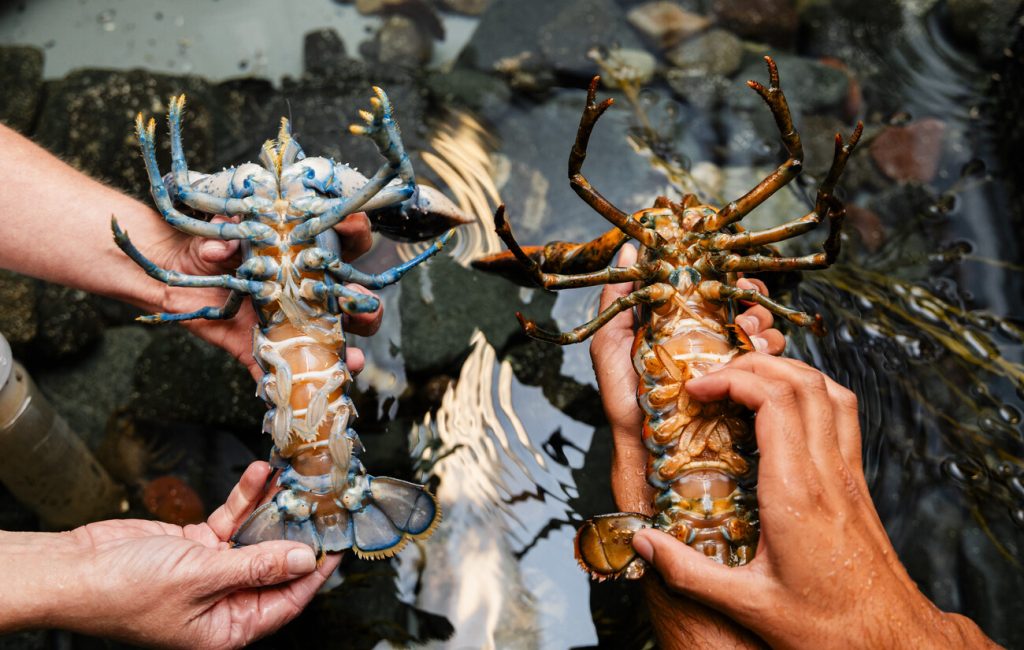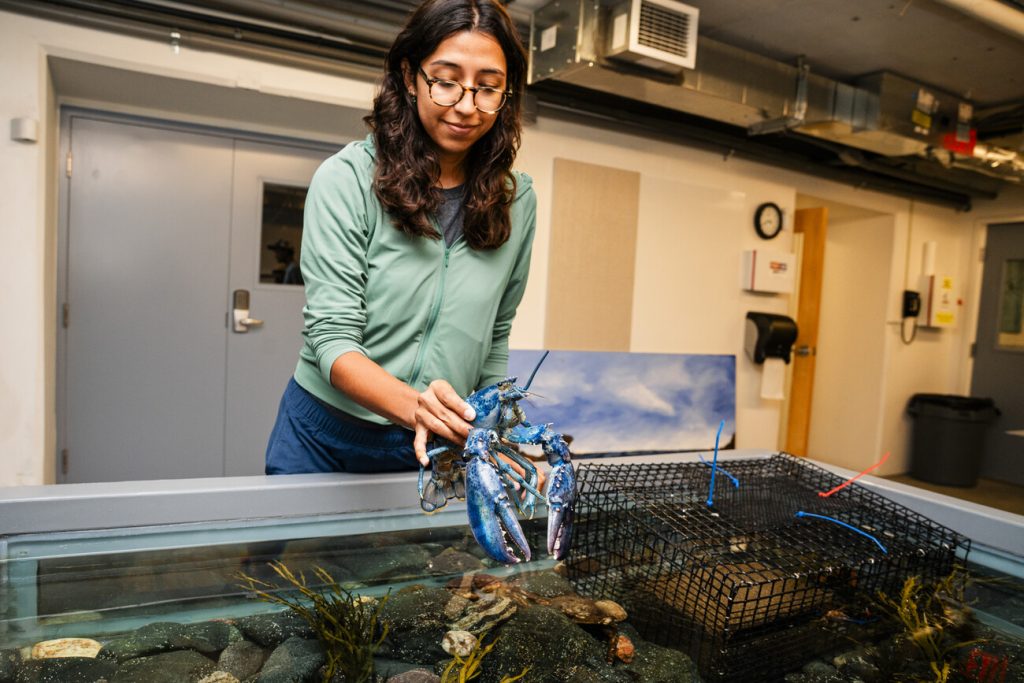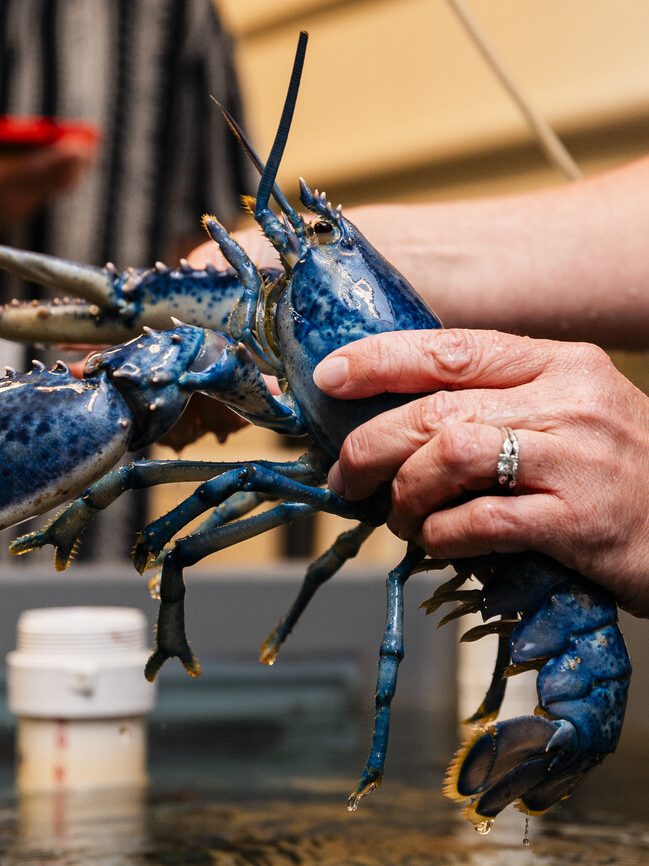NAHANT — The next time you’re around Northeastern University’s Marine Science Center, keep an eye out for Nahant’s newest resident, Neptune — he’s so rare that he’s literally one in 2 million — though a unique blue lobster isn’t exactly hard to miss.
He was donated to Northeastern University’s Marine Science Center by a lobsterman from Salem, Outreach Program Coordinator Sierra Muñoz explained.

“Neptune was caught by a lobster fisherman, Brad Myslinski, who works out of Salem in mid-July, and he’s a captain of the boat called ‘Sophia and Emma,’” she explained. “He’s a totally normal lobster except for the fact that they’re blue. … Lobstermen tend to donate special-colored lobsters to aquariums or universities, though sometimes people have been known to sell them on the market.”
Muñoz elaborated on the lucky catch, saying that Myslinksi reached out to a Marine Biology teacher at Lynn Classical High School, Dave Winchester, who promptly connected with Muñoz in order to help facilitate the donation.
“He immediately contacted me and said, ‘I got something for you,’ and I was so excited,” she said. “Local students that were touring the center got to meet Neptune right away, where they can learn all about blue lobsters, before voting on his name.”

She continued, saying the coloration comes from different combinations in Neptune’s proteins, which help pigment the shells.
“It’s a genetic anomaly, and it’s my understanding that he can molt (shed his outer, hard layer) and stay blue,” she said.
Assistant Outreach Instructor Jay Krithivas echoed that point.
“With the mutation that causes them to be blue or a different color, the lobsters have all of those colors mixed in naturally, and the mutation is actually something that knocks out the expression of the other colors, so in a way the mutation is just revealing a color that’s always been there,” he said.
Neida Villanueva, a second-year Ph.D. student with Northeastern University, explained that out there in the ocean, there’s more than the rare blue lobsters.
“(Turning blue) can happen after they molt,” she said. “There’s cotton candy-colored lobsters, yellow lobsters and calico, too — there’s a bunch of different color variations.”

Muñoz said that “as far as we know, they’re supposed to be one in two million in the wild.”
A report by the New England Aquarium from 2020 also stated that blue lobsters found in the wild are about one in two million.
“It’s even rarer that they’re caught,” Muñoz said. “I can imagine it’s a lot harder to camouflage yourself as a lobster when you’re bright blue and all the rocks around you are grey and green.”
Muñoz said the donation leaves room for new research opportunities for students and visitors who come to the Science Center.
“I think there could really be some interesting observations we could do, to see if his behavior changes, or defensive behaviors. Does he know that he’s blue?” Muñoz said. “It’s more for students and the public to have these open-ended observations and ask questions. … We’ve had him for three weeks, and we’ve had programs with high school students, public tours, and we’ve already gotten so many interesting questions from people that are interested.”
She then posed a question.
“If Neptune were to reproduce, would those baby lobsters be blue, too?”
Muñoz said they don’t know the answer to that question yet, but one thing is certain — Neptune has swiftly become Nahant’s newest celebrity.




